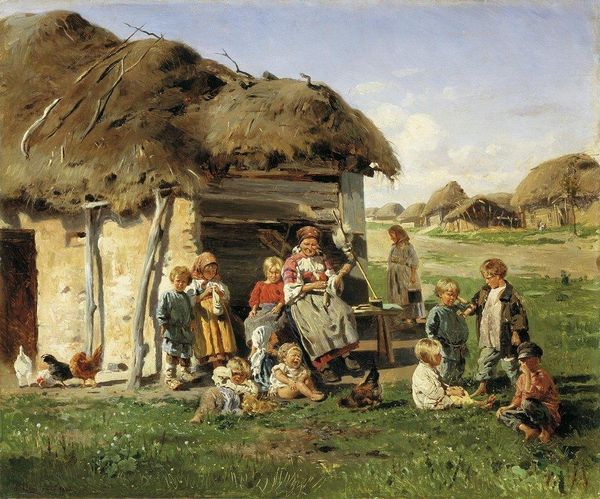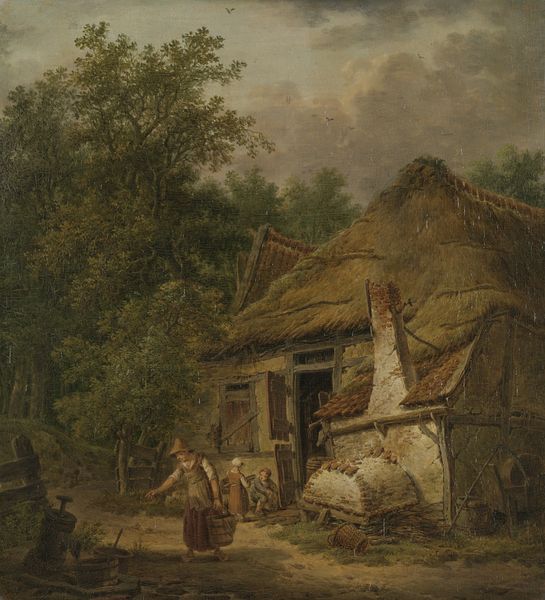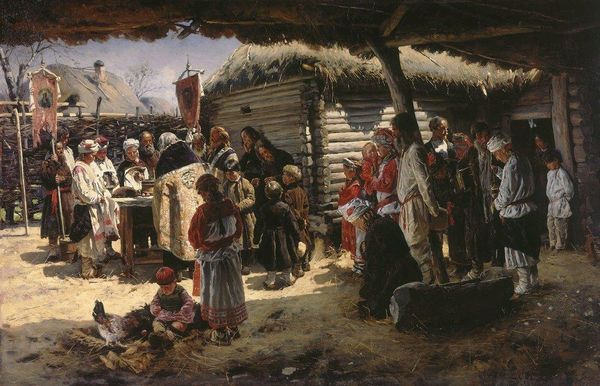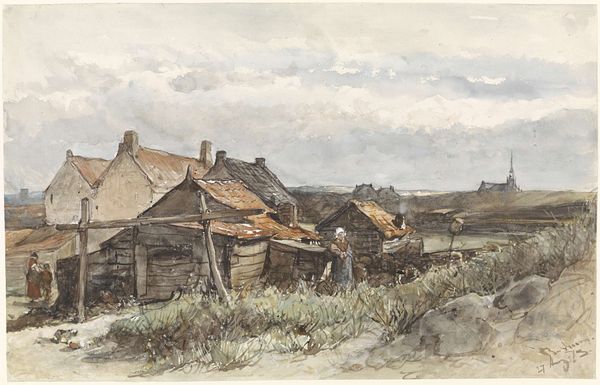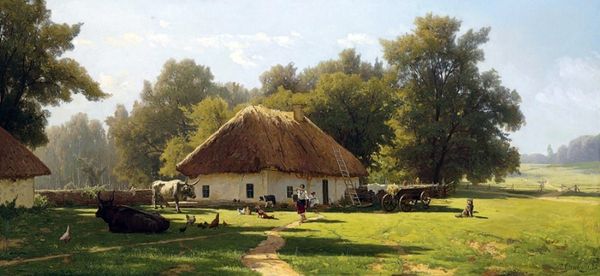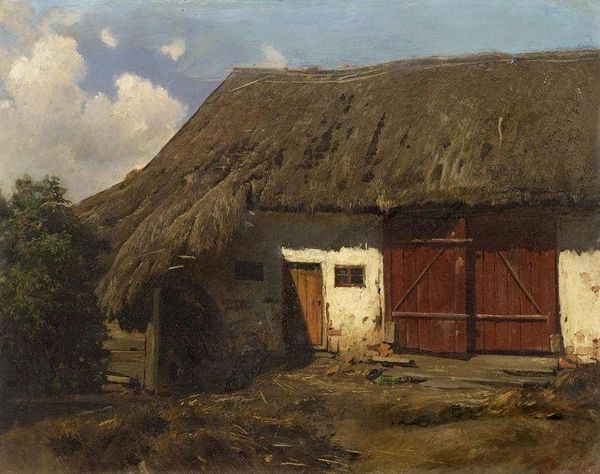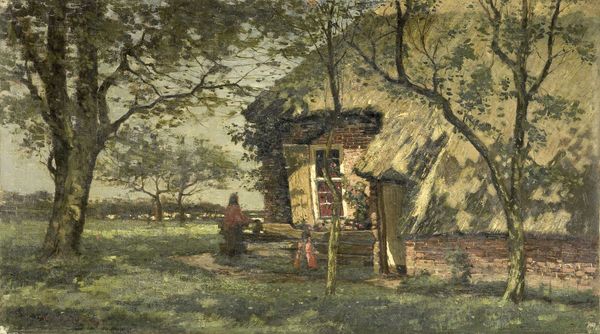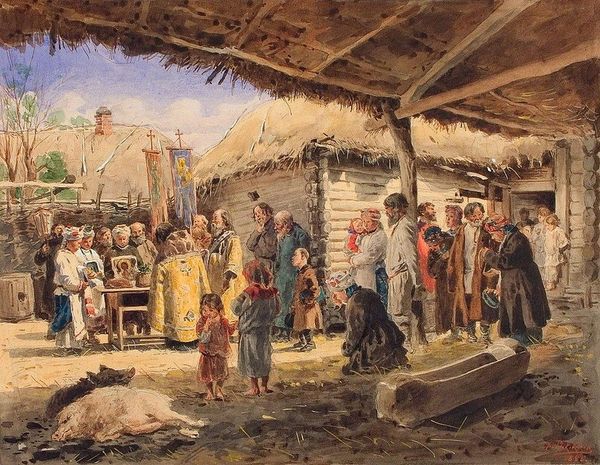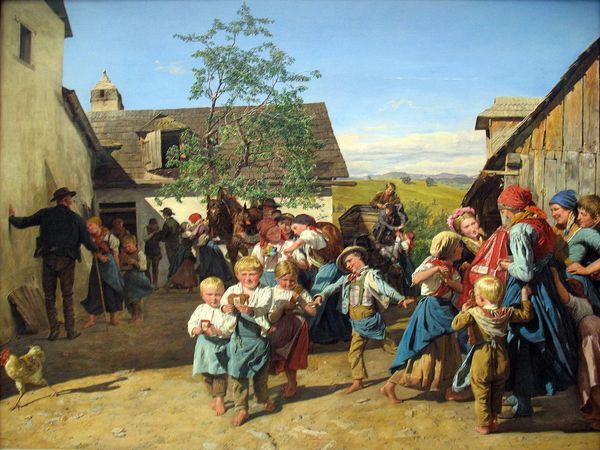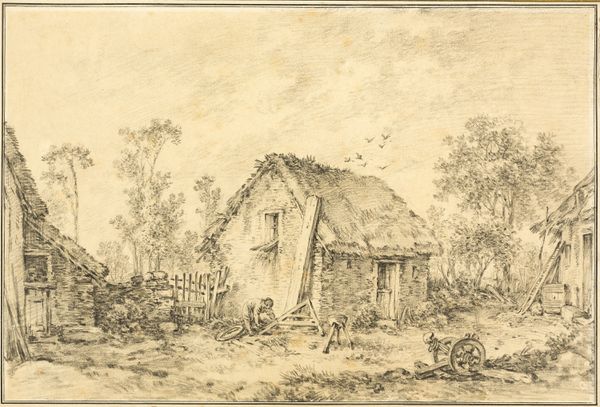
Copyright: Public domain
Curator: This is "After the Market," painted in 1876 by Konstantin Egorovich Makovsky. Editor: What strikes me immediately is the warmth of this scene. The earth tones and depiction of rustic life evoke a particular nostalgia, almost a staged authenticity. Curator: Precisely! Makovsky was a master of observing and representing daily life, although his paintings were very often exhibited in upper class establishments or private collections. Look at the textural contrasts – the rough-hewn logs of the building, the woven baskets, and the meticulously rendered fabrics of the clothing, all brought to life with oil paint. These choices elevated these genre scenes. Editor: True. It makes one wonder about the market itself. What was sold and bartered? Who benefited from these transactions, and what role did paintings like this play in documenting – or perhaps romanticizing – these rural practices? The labour behind food and the process by which clothing becomes apparel. Curator: Certainly, it's also worth thinking about the role of exhibitions and institutions which shaped the display, the narrative and even the value of Makovsky's pieces, as representations of everyday folk. One can assume this particular canvas may well have catered to urban buyers. Editor: It is also interesting how the figures in this particular piece relate to each other and the viewer. Note, there seems to be a range of engagement and disinterest here. The arrangement creates a narrative pause and gives an interesting dimension. Curator: The light, falling primarily onto the gathering figures at the center, guides our eye and creates a focal point, emphasizing community and the everyday actions within the scene. These touches also help further this nostalgic sense of village existence, even back then, no doubt. Editor: Seeing the amount of attention focused on everyday lives represented in spaces and places also highlights that genre painting can give light to the political meanings woven into our histories and social structures. I wonder how art pieces of such style play into current power dynamics within Russia, too. Curator: Indeed. Viewing and analyzing art pieces like “After the Market”, considering its social and material history, makes our experiences within the art spaces so much richer and contemplative. Editor: Agreed. And with the right lens, these analyses can invite questions beyond what seems to simply be depicted.
Comments
No comments
Be the first to comment and join the conversation on the ultimate creative platform.
